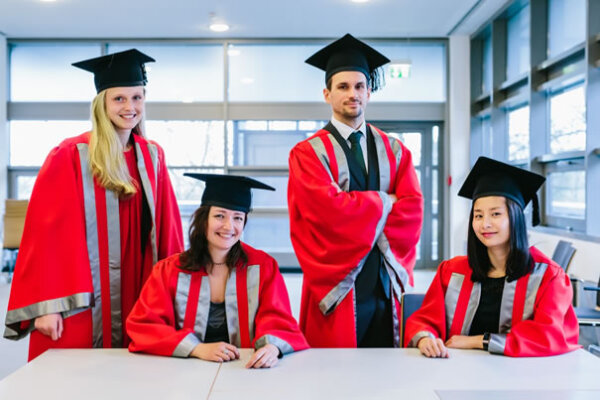2019-12-04

On Wednesday, the 4th of December 2019, Steffi successfully defended her doctoral thesis on the “Mechanisms of light-induced neuronal asymmetry during embryonic development” at the IGSN. Most vertebrate brains display neuro-functional asymmetries and we know very little about their ontogeny. Steffi used in her PhD the visual asymmetry of pigeons to study the impact of microRNAs on asymmetry development. MicroRNAs are small non-coding RNAs that regulate many downstream biological processes. Although very promising, close to nothing is known about that in pigeons. Despite this challenge, Steffi managed to discover the critical main events in a tour de force of newly established techniques. First, she established from scratch microRNA analysis in our lab and demonstrated that there is no asymmetry in the retina but in the tectum for embryonic expression of the microRNA-183 cluster. To move deeper, she established qPCR and showed that all constituent parts of the microRNA-183 cluster in the right tectum were low when dark, but very high when light incubated. The left tectum evinced only intermediate expression levels after light incubation. Thus, light seems to be needed to induce expression but then primarily activates the not-light exposed right tectum! Puzzling. To solve this, Steffi reconstructed the hottest candidates for the targets of microRNA-183 and found pathways for growth and signal transduction. Then she started to identify with in situ hybridization and laser microdissection the anatomical localization of neurons that are modified by miR-183. Here, she discovered upper and lower tectal cells differ between left and right with respect to the different sub groups of microRNA-183 stained cells. Like Sherlock Holmes, she then puts the puzzle together and puts forward a likely scenario of molecular and cellular events that define the first steps of an asymmetrical brain. The committee consisting of Onur Güntürkün, Carsten Theiß, Giorgio Vallortigara, Thorsten Müller, and Laurenz Wiskott was deeply impressed and awarded this grand work with a summa cum laude.
Congratulations Steffi! We are extremely proud of you.

On Wednesday, the 4th of December 2019, Steffi successfully defended her doctoral thesis on the “Mechanisms of light-induced neuronal asymmetry during embryonic development” at the IGSN. Most vertebrate brains display neuro-functional asymmetries and we know very little about their ontogeny. Steffi used in her PhD the visual asymmetry of pigeons to study the impact of microRNAs on asymmetry development. MicroRNAs are small non-coding RNAs that regulate many downstream biological processes. Although very promising, close to nothing is known about that in pigeons. Despite this challenge, Steffi managed to discover the critical main events in a tour de force of newly established techniques. First, she established from scratch microRNA analysis in our lab and demonstrated that there is no asymmetry in the retina but in the tectum for embryonic expression of the microRNA-183 cluster. To move deeper, she established qPCR and showed that all constituent parts of the microRNA-183 cluster in the right tectum were low when dark, but very high when light incubated. The left tectum evinced only intermediate expression levels after light incubation. Thus, light seems to be needed to induce expression but then primarily activates the not-light exposed right tectum! Puzzling. To solve this, Steffi reconstructed the hottest candidates for the targets of microRNA-183 and found pathways for growth and signal transduction. Then she started to identify with in situ hybridization and laser microdissection the anatomical localization of neurons that are modified by miR-183. Here, she discovered upper and lower tectal cells differ between left and right with respect to the different sub groups of microRNA-183 stained cells. Like Sherlock Holmes, she then puts the puzzle together and puts forward a likely scenario of molecular and cellular events that define the first steps of an asymmetrical brain. The committee consisting of Onur Güntürkün, Carsten Theiß, Giorgio Vallortigara, Thorsten Müller, and Laurenz Wiskott was deeply impressed and awarded this grand work with a summa cum laude.
Congratulations Steffi! We are extremely proud of you.